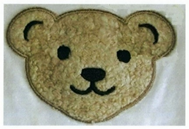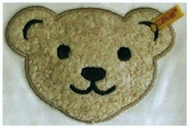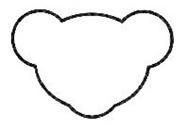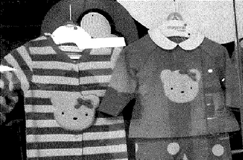Appeals court rejects Steiff’s claims of infringement on bear mark
The use of symbols and motifs on garments has, in the recent past, been discussed before the courts. A prominent recent example for the European Union may be the COFEMEL case on copyright protection (12 September 2019, Case C-683/17). In German case law, the qualification of the model designation SAM as a secondary mark for a jeans model resulted in a decision from the German Federal Supreme Court (7 March 2019, Case ZR 195/17).
In a similar context, a recent decision from the Frankfurt Court of Appeal (6 W 34/21) serves as a strong reminder of the potential risks in enforcing, even very well-known, motif marks in the clothing context against competitors using highly similar motifs.
Facts
The plaintiff is the famous German cuddly toy manufacturer, Steiff. In its more recent history, the plaintiff became increasingly involved in premium baby and child clothing, and owns marks for clothing in several figurative variants of its famous stylised bear head. This includes two German marks showing a 2D teddy-bear head – one with and the other without the famous ‘button-in-the-ear’ on a yellow pennant, the unique feature of the company’s cuddly toys. Further, the plaintiff owns an EU trademark showing the outline of a stylised teddy bear head.



The plaintiff sought a preliminary injunction from the Frankfurt District Court against the defendant, which sold various pieces of baby clothing with different bear motifs on the front chest area.

With the exception of one piece of clothing, the court entirely rejected the claims. In its appeal, the plaintiff requested the Frankfurt Court of Appeal to revoke the district court’s decision and to accept the claims for injunctive relief in its entirety.
Decision
The Frankfurt Court of Appeal confirmed the district court’s decision, arguing that infringement requires “use [of the bear] as a trademark”, meaning the relevant public would have to perceive the challenged bear logos each as an indication of origin in the specific circumstances of use. In this regard, the labelling practices in the clothing sector (ie, the kind, manner and positioning of logos/motifs) was found to have a decisive influence on whether a motif is understood either as a trademark (indication of origin) or merely as a decorative element.
The relevant public would not generally perceive pictures, motifs, symbols and words attached on the front of a garment as an indication of origin, especially as stylised animals are a common motif on baby and child’s clothing. The Frankfurt Court of Appeal further confirmed that the plaintiff’s own labelling practice, the teddy-bear head with a yellow pennant positioned on the chest area of the garments, may indeed be perceived as an indication of origin. However, this perception is attributed largely to the stylised yellow pennant on the ear of the bear (referring to the well-known ‘button-in-ear’ for stuffed animals). The teddy-bear motif in itself would be perceived by the relevant public as a purely decorative element, even when attached to the chest area. The court stated that, in principle, a mark’s reputation could lead to the perception of this motif as indication of origin. However, in the case at hand, the evidence of alleged reputation provided by the plaintiff was rejected as insufficient.
Comment
It is commonly accepted in trademark law that trademark protection does and should not extend to the protection of mere motifs. For fashion brand owners, the increased reputation of a motif can be a way out of this dilemma. The fact that the quite famous plaintiff in the underlying case had difficulties demonstrating reputation should, however, be a strong reminder to trademark owners that it is always worth having a solid base of prima facie evidence for reputation in one’s back pocket. Specifically, the tight deadlines under German law for requesting a preliminary injunction (up to two months from learning of infringement, depending on local jurisdiction) and the required in-company coordination on the client side hardly allow possible plaintiffs time to start collecting convincing facts and data for demonstrating reputation only upon detection of a specific infringing product or advertisement on the market. Also, the specific standards of evidence in preliminary proceedings under German procedural law may require the reasonable disclosure of information via affidavit, which should always be carefully considered from a business perspective.
This article was first published on World Trademark Review on 23 September 2021 (see https://www.worldtrademarkreview.com).
